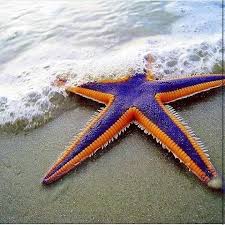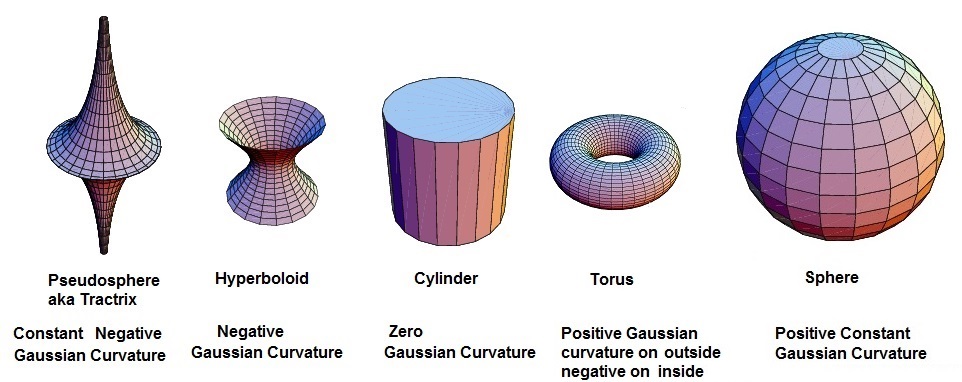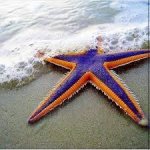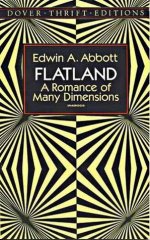Ah! A quick search reveals that you're quoting Bohmian mechanics with its suggestion that certain states and/or measurements are not available to us....it's not the outcome that is uncertain. It's the initial conditions that are unknowable.
A free PDF of the David Bohm Centennial publication 'Emergent Quantum Mechanics' (EmQM) is available to download here:
Out now and free to download: Emergent Quantum Mechanics - David Bohm Centennial Perspectives
Bang up to date ramblings, published April 2019. You're a wizard, Steve!

Seems I've got a lot of reading to do to keep up with you, Steve!
Bohmian Mechanics (Stanford Encyclopedia of Philosophy)
Bohmian Mechanics (Stanford Encyclopedia of Philosophy)
It's curious that the Google Search Engine, which seems to know so much about me, down to my favourite Musicians, is suggesting I might be interested in Ads for the part-time Evening Classes of Birkbeck College, London lately.
Clearly it knows I am old. And interested in Physics.
My friend, Simon, studied under David Bohm. His main takeaway, after a few Lagers, was that good Physicists have a name of 4 letters beginning with B.
Born, Bohm, Bose, Bell. Need I go on? 😎
This Universe has a pattern. It's just that we see it through a glass darkly. 🙄
Clearly it knows I am old. And interested in Physics.
My friend, Simon, studied under David Bohm. His main takeaway, after a few Lagers, was that good Physicists have a name of 4 letters beginning with B.
Born, Bohm, Bose, Bell. Need I go on? 😎
This Universe has a pattern. It's just that we see it through a glass darkly. 🙄
No, you would be in danger of becoming a Bohr! 😀Born, Bohm, Bose, Bell. Need I go on? 😎
Your link deals with 'quantum entanglement'. When two particles are in an entangled state, changing the properties of one of them instantly changes the properties of the other, regardless of how far they are apart. It doesn't matter that it would require a signal to travel faster than light to produce such a result!
Physicists at the University of Glasgow have captured the world's first photo of quantum entanglement. Scientists Just Unveiled The First-Ever Photo of Quantum Entanglement
Quantum mechanics, dontcha just love it! 😎
Hello Mr. Galu!
I don't likely have a single thing further to offer to this conversation but it would be rude to just just to walk away from your friendly reply. I posted not because I know anything technical about the subject but because stripped of technical jargon the article simply says that things are connected in ways not previously considered (useful). I happen to think everything is driven by consciousness, ie. our concept of how things work simply allows us to assemble workable pathways from a realm (universe) of infinite possibilities. All the discoveries we make are discoveries in consciousness. Once acclimatized to a new notion we can get creative within it. I have no doubt that if we dwell on the notion of interconnection not limited by distance and the possibility of instantaneous position change for long enough we'll form ourselves into the knowledge to do it . . . though it would not be surprising if the mental changes needed to go through to get there means those humans would barely recognize us as their own.
Consciousness, the state of being aware of and responsive to one's surroundings, must be at the heart of all scientific endeavours.All the discoveries we make are discoveries in consciousness.
I like it!"i.e. our concept of how things work allows us to assemble workable pathways from a realm (universe) of infinite possibilities."

This thread has got me worried. I am realising just how much I either don't know, or have forgotten.
Listening to these Seas Carroll podcasts, I am really struggling to keep up with a lot of it:
Physics – Sean Carroll
There even seems to be huge disagreements between the top physicists.
Very weak on "Quantum Theory" and "Quantum Entanglement" and "Dark Energy".
I am missing Susskind's primer on Quantum Mechanics, The Theoretical Minimum:
Quantum Mechanics: The Theoretical Minimum (Theoretical Minimum 2) eBook: Susskind, Leonard, Friedman, Art: Amazon.co.uk: Kindle Store
And I don't want to burn all my limited monthly bandwidth on Youtube Susskind lectures.
YouTube
This is like going down a rabbithole. You could spend years doing the background reading. 😱
Listening to these Seas Carroll podcasts, I am really struggling to keep up with a lot of it:
Physics – Sean Carroll
There even seems to be huge disagreements between the top physicists.
Very weak on "Quantum Theory" and "Quantum Entanglement" and "Dark Energy".
I am missing Susskind's primer on Quantum Mechanics, The Theoretical Minimum:
Quantum Mechanics: The Theoretical Minimum (Theoretical Minimum 2) eBook: Susskind, Leonard, Friedman, Art: Amazon.co.uk: Kindle Store
And I don't want to burn all my limited monthly bandwidth on Youtube Susskind lectures.
YouTube
This is like going down a rabbithole. You could spend years doing the background reading. 😱
And risk ending up mad as a hatter!This is like going down a rabbithole. You could spend years doing the background reading. 😱

Attachments
Down the Rabbithole!

I was trying to read Roger Penrose today "the Emperor's New Mind". Heavy going, The only vaguely Quantum Book I have these days.
I did glean that the Quantum wave function is at least 5-dimensional, being complex on two axes at least. And the photon IS a corkscrew spiral in momentum space, so I was not too far off.
Now I LIKE multi dimensions! Shall I tell you what I know? 😀
In 3D we have five platonic solids:
Platonic solid - Wikipedia
Tetrahedron, Cube, Octahedron, Dodecahedron and Icosahedron. The last two have a pentagonal symmetry.
In 4D, you get 6.
Regular 4-polytope - Wikipedia
The new one is called a 24-cell, and has no analogue in 3D. It is self-dual.
24-cell - Wikipedia
After that, as you go any higher, it whittles down to just 3. Analogues of the Tetrahedron and the Cube and the Octahedron. Which are simple three and fourfold symmetries AFAIK.
So 4-dimensions has the most interesting symmetries IMO. 😎
I was trying to read Roger Penrose today "the Emperor's New Mind". Heavy going, The only vaguely Quantum Book I have these days.
I did glean that the Quantum wave function is at least 5-dimensional, being complex on two axes at least. And the photon IS a corkscrew spiral in momentum space, so I was not too far off.
Now I LIKE multi dimensions! Shall I tell you what I know? 😀
In 3D we have five platonic solids:
Platonic solid - Wikipedia
Tetrahedron, Cube, Octahedron, Dodecahedron and Icosahedron. The last two have a pentagonal symmetry.
In 4D, you get 6.
Regular 4-polytope - Wikipedia
The new one is called a 24-cell, and has no analogue in 3D. It is self-dual.
24-cell - Wikipedia
After that, as you go any higher, it whittles down to just 3. Analogues of the Tetrahedron and the Cube and the Octahedron. Which are simple three and fourfold symmetries AFAIK.
So 4-dimensions has the most interesting symmetries IMO. 😎
Now I'm all at sea! 😉...the most interesting symmetries...
Attachments
Isn't Nature wonderful! Why hasn't it got SIX legs? Like a snowflake. 😕

The Universe never passes up a good bit of maths! And Geometry is interesting too:

Nobody is quite sure what sort of space we live in. The String Theorists favour a Toroid. The Standard Model might prefer spherical or hyperbolic.
Flat just doesn't excite anyone much.
The Universe never passes up a good bit of maths! And Geometry is interesting too:
Nobody is quite sure what sort of space we live in. The String Theorists favour a Toroid. The Standard Model might prefer spherical or hyperbolic.
Flat just doesn't excite anyone much.
This book may be right up your street, Steve! Flatland: A Romance of Many Dimensions by Edwin A. Abbott
It describes the journeys of A. Square, a mathematician and resident of the two-dimensional Flatland. Square has adventures in Spaceland (three dimensions), Lineland (one dimension) and Pointland (no dimensions) and ultimately entertains thoughts of visiting a land of four dimensions.
Currently available on Kimble for 49p!
It describes the journeys of A. Square, a mathematician and resident of the two-dimensional Flatland. Square has adventures in Spaceland (three dimensions), Lineland (one dimension) and Pointland (no dimensions) and ultimately entertains thoughts of visiting a land of four dimensions.
Currently available on Kimble for 49p!
Attachments
I've looked into this topic and it appears that the origins of quantum biology go back to the origins of quantum theory itself, the mathematical framework of which was in place by 1927.There was a program on Spectrum Channel on Quantum Biology. They explained how quantum phenomena are part of everyday life. For example at photosynthesis, whenever a photon hits the surface of a green leaf, its energy is immediately occuring inside the nucleus. No transport is involved.
The subject of quantum biology remains controversial, particulary in relation to photosynthesis. A more established role for quantum mechanics is in regard to the quantum tunnelling of electrons and protons in enzyme catalysis, and tunneling is also thought to be involved in olfaction. It is now suggested that quantum entanglement provides a mechanism for avian navigation.
In the Blink of Bird'''s Eye, a Model for Quantum Navigation | WIRED
You might find a little book written by Edward Leedskalnin titled 'Magnetic Current' interesting. An eccentric Latvian who emigrated to Florida around the turn of the 19th century in order to build his castle for his sweet sixteen. It reads as if he had autism but you can glean bits of insight into his intellect. In it he describes electromagnetism traveling in spiral form in both directions simultaneously to form magnetic flux. He refers to numerous experiments and gives instructions on how to build a perpetually revolving permanent magnet structure that produces an electric current hooked up to a small light bulb which lights up when the magnets rotate.And the photon IS a corkscrew spiral in momentum space, so I was not too far off
Any way, he chose his destination based on where the magnetic lines of flux of the Earth's magnetic field are the thickest. How he discovered there just happens to be a very large one either entering or exiting Florida is anybody's guess. On arrival he began to build it. It's partial construction is a tourist attraction now called Coral Castle. Large 20+ ton monoliths sit in various locations hewn out of the natural coral bedrock in the area. Leonard Nimoy, host of 'In Search Of', showcased Leedskalnin in an episode where eye witnesses still living confirmed he somehow miraculously lifted these massive blocks he hewed himself onto a flatbed truck using nothing observable by the witnesses who were the drivers of the trucks he hired to cart them to their present locations. They would back up the truck to the spot when he would order them to turn around to prevent them from seeing how he did it and a few seconds later it would be sitting on the flat bed ready to go with no lifting apparatus in sight. The allusion via his little book and experiments suggest he somehow utilized the Earth's magnetic field.
So the connection to your statement of the photon and magnetic flux being virtual photons moving in a spiral brought this to mind.
Last edited:
I'm kinda reminded of this.
The Unreasonable Effectiveness of Mathematics in the Natural Sciences - Wikipedia
The Unreasonable Effectiveness of Mathematics in the Natural Sciences - Wikipedia
A preview of the book is available here: Magnetic Current - Edward Leedskalnin - Google BooksYou might find a little book written by Edward Leedskalnin titled 'Magnetic Current' interesting.
Edward was certainly attracted to magnets! 😀
As for his 'magnetic powers', it is more likely that Leedskalnin's stonemasonry and logging skills allowed him to move the large blocks of stone using levers, wheels, axles, pulleys, ramps, and wedges.
I looked up Edward Leedskalnin too.
Mad as a hatter, or a box of frogs, IMO.
He hired a lorry for his first move. 😀
And AFAIK, the magnetic moment of the Electron was well known in his era.
I suppose most of us are interested in how the Ancients got those stones 100 miles to Stonehenge.
Lorries is my answer. 🙄
Mad as a hatter, or a box of frogs, IMO.
He hired a lorry for his first move. 😀
And AFAIK, the magnetic moment of the Electron was well known in his era.
I suppose most of us are interested in how the Ancients got those stones 100 miles to Stonehenge.
Lorries is my answer. 🙄
Your link includes the quotation below, which is in line with what I've said recently in this thread.I'm kinda reminded of this.
"We should stop acting as if our goal is to author extremely elegant theories, and instead embrace complexity and make use of the best ally we have: the unreasonable effectiveness of data."
— Peter Norvig
— Peter Norvig
- Status
- Not open for further replies.
- Home
- Member Areas
- The Lounge
- What is the Universe expanding into..


